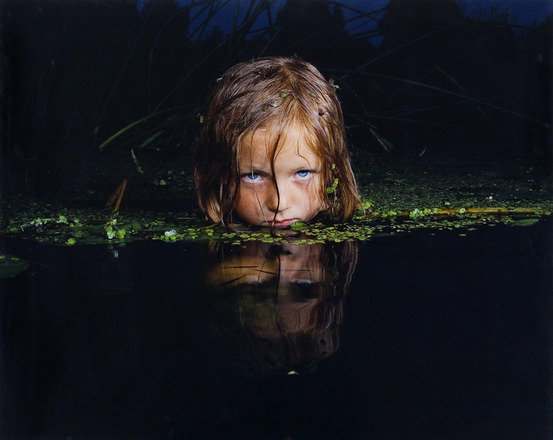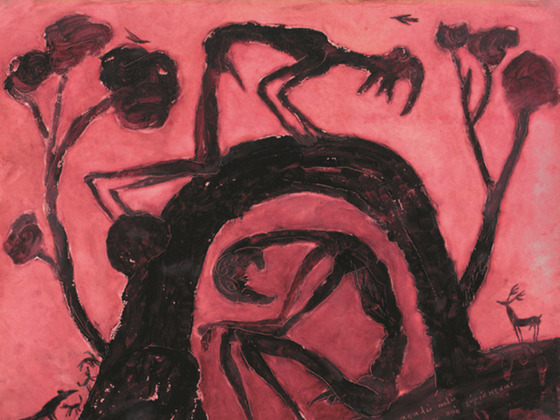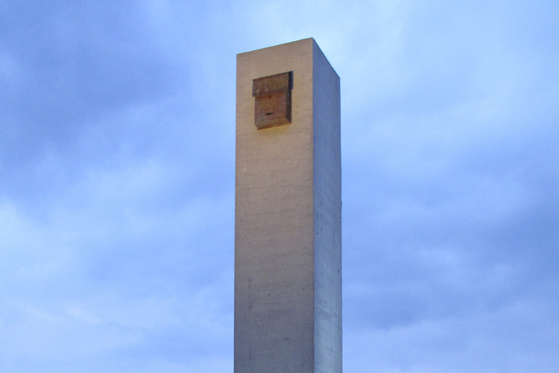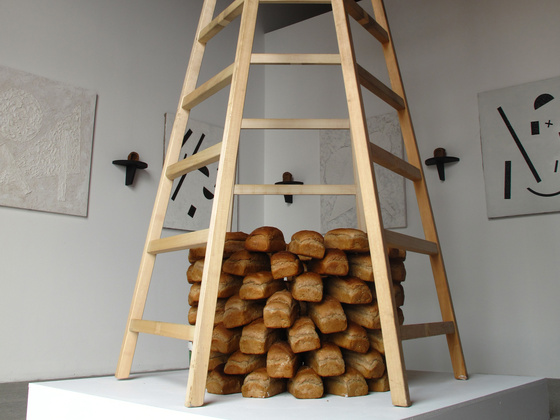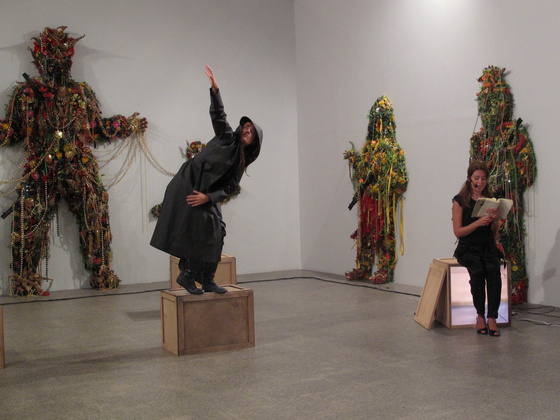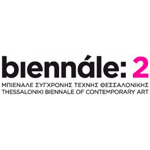
In the autumn of 2009 Stella Art Foundation becomes one of the key participants at the 2nd Thessaloniki Biennale of Contemporary Art, with a whole series of artistic activities arranged in the context of the Biennale parallel programs and consolidated in a single ambitious project Moscow-Thessaloniki 2009 / Works from Stella Art Foundation collection.
Key event of the project is opening of an exhibition under the title Subjective Visions / Works from the Stella Art Foundation Collection. The collection has recently been presentment at the two outstanding museum spaces: at the Viennese Kunsthistorisches Museum in 2008 and at Ca’ Rezzonico within the parallel program of the 53rd Venice Biennale in 2009. But it’st is the first time that a presentation of the collection covers works of foreign artists along with Russian authors. Exposition includes about one hundred works, featuring names like Nikita Alexeyev, Yuri Avvakumov, Yuri Albert, Vagrich Bakhchanian, Alexey Buldakov, Olga Chernysheva, Michael Craig-Martin, Evgenia Emets, Elena Elagina and Igor Makarevich, Alexandra Galkina, Alexander Gnilitsky, Dmitry Gutov, Howtan, Institution of Unstable Thoughts, Ilya and Emilia Kabakov, Alex Katz, Maria Konstantinova, Joseph Kosuth, Oleg Kulik, Robert Mapplethorpe, Andrey Monastyrsky, Ilya Trushevsky, Stas Polnarev, Dmitry Tsvetkov and Spencer Tunick.
Thalea Stefanidou, curator of the Foundation’s Thessaloniki project, focuses on the key issues of existence of contemporary art and culture, which she formulates in the most general form: “How does an art work emerge? How is a collection ‘built’? How is the content of a collection restructured in relation to new spaces of its reception and the curatorial task?” (...)
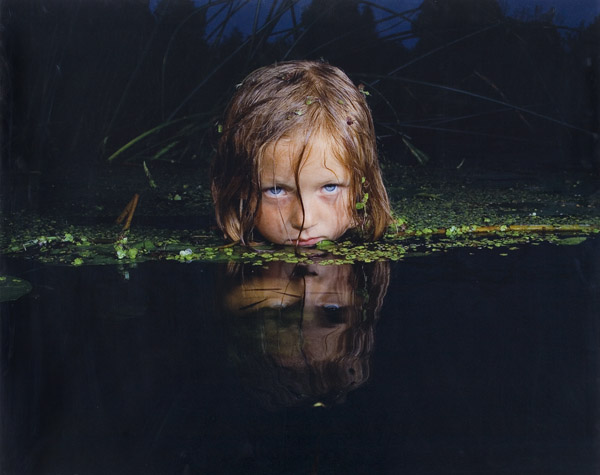
Thessaloniki Archeological Museum which is famous for its collection of Ancient Greek art, will host an exhibition of Alexander Djikia, special guest of the Biennale, entitled Drawings Based on Motifs of Minoan and Mycenaean Seals which is sponsored by Stella Art Foundation.
Alexander Djikia is a renowned architect and artist, famous for his paradoxical, ironical, philosophical graphics created with the superb control of line. The motifs of the ancient art proved to be very congenial to his artistic sense and were deeply explored by the artist. Archeological Museum hosts two series by Djikia of this kind.
There are two types of modern Greek language: that of everyday life and another, called Katharevousa, which is aristocratic and byzantine-sophisticated. While studying the later using a textbook by Sophocles Andriades the artist was charmed by this rare, vanishing language and the manner of it’s representation. In 2003 he created in the style of free interpretation of Ancient Greek vase paintings a series of graphics entitled Katharevousa. It was produced as a visual commentary to entertaining, lyrical, didactic and elegant phrases from grammatical drills.
Works from the second series, created in 2001 — 2002, are dedicated to Minoan-Mycenaean seals, and follow their originals rather closely. In comparison to frescoes, ceramics, sculpture or metal relieves the seals survived much better and they fully reflect the cosmogony of the Minoan-Mycenaean civilization and present the widest selection of its figurative styles and themes. The artist gave a refined replica interpretation of their vital force, of realism and mysticism junction, of symbolic veracity. This was a unique experience to Djikia of a research of images that were not originally a subject of his own and only imagination.
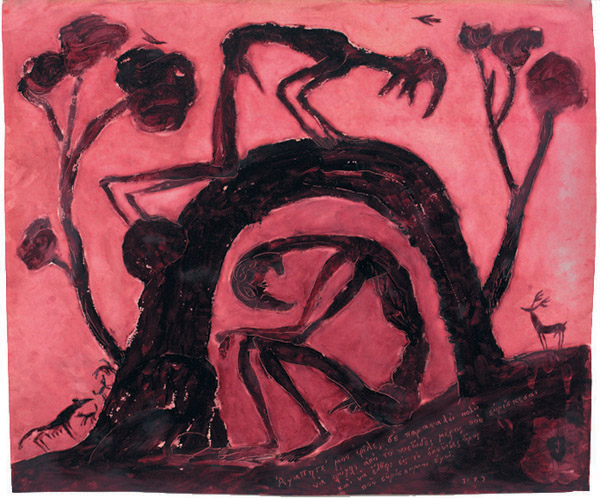
In 2009 emerging artist Haim Sokol received the “New Generation” special prize sponsored by Stella Art Foundation at the Annual Russian National Award for Contemporary Visual Arts “Innovation”. The essential part of the reward was Foundation’s support in creation of the monument To All Who Ever Lived Here, which is included in the Foundation’s Thessaloniki Biennale program. The monument will be installed in front of the Thessaloniki port main entrance and will be donated to the city on behalf of the Foundation.
The artist comments the project as follows: “There are several cities on earth in which the fourth dimension, that of time, is felt particularly strongly. Thessaloniki, is undoubtedly, one of such cities. That is why one involuntarily feels an incredible desire to create here something in time rather than in space. Somebody once described a work of art as ’a SOS signal sent to future centuries’. We live in the future, an incredible, distant future, one which we couldn’t dream of even fifty or one hundred years ago. Therefore, we are a destination point and addressees for all the people who, at some point in time before us, dreamt of something, created something and were striving to achieve something. All those who once lived here.”
The sculpture comprises a monumental concrete stela, five meters high, with a mail box fastened to its very top, thus, one will try in vain to through a letter into the slot. For the opening the city government will send “invitations” to the Thessaloniki addresses of people forced by different circumstances to leave the city. Thessaloniki was founded in the Alexander the Great’s native land soon after his death of in IV century BC and since that the city has known the rises, being Constantinople’s rival, and falls, being conquered in many wars. During the ages it belonged to Roman Empire, Byzantine Empire, the Second Bulgarian Empire, Venetian Republic, Ottoman Empire and now is a part of modern Greece. The city attracted people of Thrace, Arabia, the crusaders, the Slavs, the Goths, who flocked to the city and in many cases attacked it. The miscellanies of nations inhabiting Thessaloniki were widened in XV century by 20.000 of Sephardic Jews who were invited to the city after having been expelled from Spain; the city is often called “Mother of Israel”. Haim Sokol made the monument not to majestic historical events that took place here, but to all people’s destinies without exception, to all “grains of history sand” who were participants and moving forces of this history.
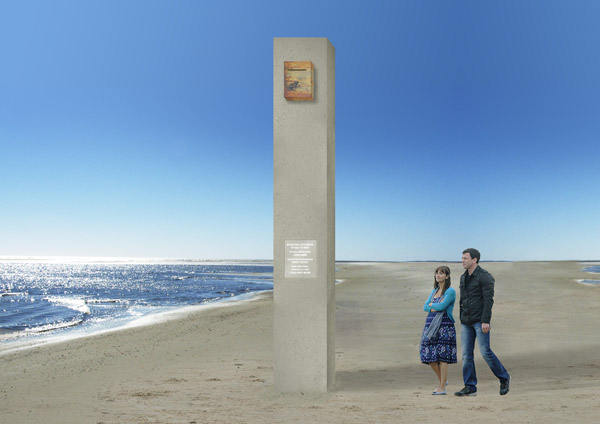
The building of the Thessaloniki sea port overlooking the sea front hosts an installation Common Cause 3 of maestros of the “Moscow conceptualism”, special guests of the Biennale Elena Elagina and Igor Makarevich, created with the support of Stella Art Foundation. The artists reproduce a conventional “exhibition” space with suprematistically abstract paintings hanging on the walls. The dominant conceptual and visual feature of the installation is a tower-shaft made of black bread bricks which is compressed with a cone of three inclined wooden ladders directed to the invisible but implied sky.
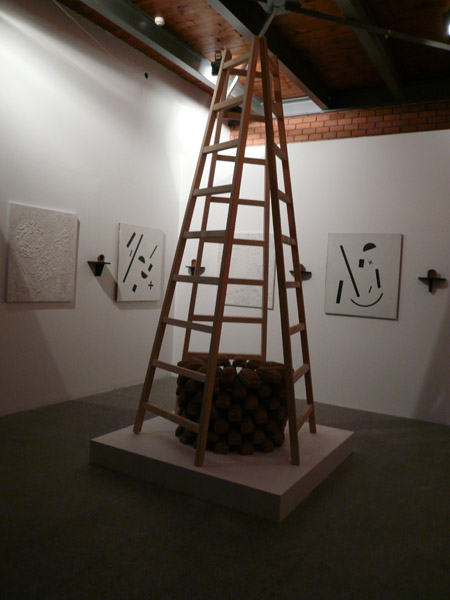
The project continues the authors’ long exploration of the semantics and visualization of the “Russian idea”, which Igor Makarevich and Elena Elagina associate with the symbols of bread, earth and the utopian quests which are very typical of the Russian avant-garde art and scientists of the “cosmic” school.
The artists gave the following comment on their project: “We borrowed the title Common Cause from the principal work of the Russian philosopher Nikolay Fyodorov Philosophy of the Common Cause. Fyodorov’s teaching greatly influenced Russian philosophers and writers. Suffice it to mention names like Leo Tolstoy, Feodor Dostoyevsky and Vladimir Solovyov. One could even say that Fyodorov’s philosophy gave birth to the idea of the Great Utopia that predetermined the course of historical events in the 20th century. We are primarily interested in the peculiar ideas of the Philosophy of the Common Cause with its mixture of mysticism and rather straightforward materialism. The purpose of our work was to reconstruct Nikolay Fyodorov’s doctrine in its pure form. Tsander, Koleichuk, Chizhevsky and Tsiolkovsky are but a few of his disciples — historical figures whose role is yet to be fully understood. Bread, in its sense of the foundation of the earthly life, played a primary role in the teaching of the Russian cosmism. ’The outer space will give us bread’, Tsiolkovsky insisted.”
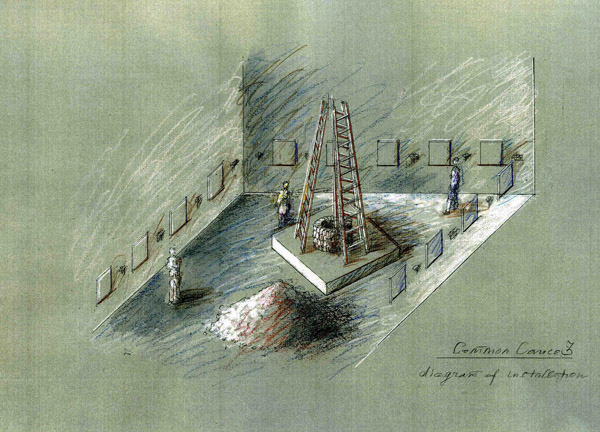
A successful poetic project of the Moscow Poetry Club entitled Making Words was displayed for the first time at the 53rd Venice Biennale under the curatorship of Daniel Birnbaum and Eugeny Bunimovich. It is continued at the 2nd Thessaloniki Biennale of Contemporary Art. The Moscow Poetry Club, founded by Stella Art Foundation, presents in cooperation with the Greek company ArtBOX performances of Russian, Greek and Cypriot poets in Thessaloniki sea port. A platform designed by Yula Hadjigeorgiou and Yannis Epaminondas as a stage space for poetic performances and actions, will mark the entrance to the exhibition of Igor Makarevich and Elena Elagina Common Cause 3. Russian poets participating in the project include Kirill Kovaldzhi, Gennady Kanevsky, Alexey Korolev, Vadim Mesiats, Andrey Tavrov, Alexander Rytov and Eugeny Nikitin.
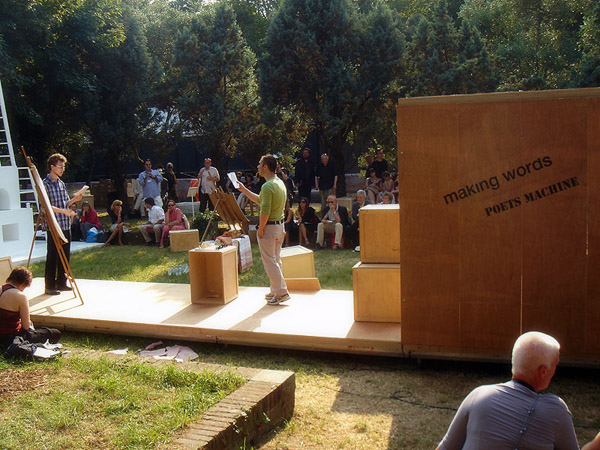
The “Moscow-Thessaloniki 2009” program was supported by the Moscow City Government; the 2nd Thessaloniki Biennale of Contemporary Art; Thessaloniki Contemporary Art Museum; Thessaloniki Archeological Museum; ArtBOX.gr | creative arts management; the National Bank of Greece Cultural Foundation / Thessaloniki Centre; Thessaloniki Port Authority SA; Atlantis. Hidden Histories — New Identities; Russian Gulliver publishing house.
Official opening: September 18, 2009
Inauguration of the monument by Haim Sokol “To All Who Ever Lived Here”: September 19, 2009
Poetic readings: September 18 and 19, 2009
Exhibitions will be open for the public from September 19, to November 1, 2009
Curator: Thalea Stefanidou
Assistant curators: Anastasia Dokuchaeva, Lydia Hadjiakovou
Project directors: Alexander Rytov, Christos Savvidis
Art director: Christos Savvidis
Curators of the poetic project “Making Words”: Alexander Rytov, Eugeny Nikitin, Vassilis Amanatidis, Daphne Nikita, Christos Savvidis
Architectural curator: Giannis Epaminondas
